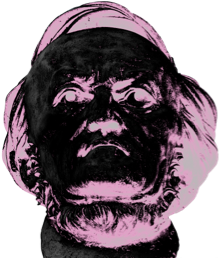Liszt’s Romance Oubliée (1881) has a unique origin story. In 1844 Liszt composed a brief but lovely melody which he first used in the mélodie, “O, pourquoi donc” S. 619, and then reworked it into a solo piano piece in 1848. It is unclear if either the song or solo piano version was published during Liszt’s lifetime. Probably not, because in 1880 the music dealer Simon of Hanover sent Liszt an album leaf with the melody, written in Liszt’s own hand, with a request to publish it. Liszt was confused and pleasantly surprised, having no memory of the tune whatsoever. Hence, when he worked it into a piece for Viola Alta and piano, it was titled Romance Oubliée, or “Forgotten Romance.”
The Romance Oubliée is very different from the original “O, pourquoi donc.” The latter follows a typical ABABA structure, with the melody set against a steady accompaniment ostinato. The former is esoteric and even austere, inhabiting a realm of harmonic and rhythmic flotsam and jetsam. Its form is truly unique to itself, and only fully makes sense in the context of the other progressive musical bad boys of the mid-19th century, Wagner and Berlioz.
In the Romance Oubliée, Liszt’s melody circa 1844 is stated fully just once. It is preceded by an introduction for solo Viola Alta that is a nod to Wagner; the crescendoing ascending half-steps make unmistakable allusion to the Prelude to Tristan und Isolde. The introduction conjures the whole atmosphere of Tristan; its anxiety, languor, and timelessness. From this emerges Liszt’s gently lilting but melancholy melody in E minor, with holes and gaps in the accompaniment rather than the obligato figurations of 1844. There is no contrasting B-section, only a fantastical and rhapsodic delaying of the cadence which covers a kaleidoscope of harmonies and implied harmonies before finally releasing on an E major cadence. This marks the beginning of the coda in which the viola plays bariolage, that is, the rapid crossing of strings, up and down, to arpeggiate a chord. Here, it is not all that rapid as this is a reference to the bariolage passage at the end of the second movement of Berlioz’s Harold in Italy, which depicts “The March of the Pilgrims Singing Their Evening Prayer.” Liszt had arranged Harold in Italy for viola and piano in 1836, and it is worth noting that Harold was commissioned by one of Liszt’s chief inspirations and heroes, Niccolò Paganini.
Given this context and with an eye for the programmatic - and one should always approach Liszt with an eye for the programmatic - we have a brief 19th-century Divine Comedy of sorts: beginning with the erotic, sensual, Schopenhauerian love-death of Tristan und Isolde, traversing through the more worldly and mundane romanticism (little “r”) of Liszt’s 1844 tune, before ascending to the chaste, pious ecstasy of the religious. This progression also mirrors Liszt’s own life journey from licentious youth to Catholic abbé. This interpretation may strike some as an overeager reading of the tea leaves, but without this context and programmatic perspective the Romance Oubliée is nearly indecipherable in form and opaque in meaning. -DO
Daniel Orsen
January 2023
Franz Liszt - Romance Oubliée

